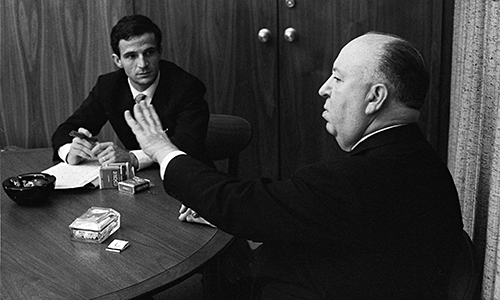A formula for suspense
 Friday, July 13, 2018 at 01:54PM
Friday, July 13, 2018 at 01:54PM 
Last year I was interviewed by someone who asked me how I went about creating suspense. They complimented me on my ability to crank up the tension in a scene, thus driving the reader forward.
I’m guessing they didn’t say “thus”, but hey, my memory is what it is.
I appreciated the kind words about the writing – but then had to wonder, well how do I do that? I won’t keep you in suspense (I kill me), so here goes...
Simplest suspense formula ever:
Writer knows something + holds back something = reader in suspense
Maybe this is just plain common writerly sense, but it took me a while to learn how to do it. And it first really came home to me from a somewhat unlikely source. The ever so amazing Canadian writer (and icon), the late Robertson Davies wrote a series of books known as the Deptford Trilogy. I’d never read him before my daughter had to read him for a class, and asked if I would read the first one (Fifth Business), and tell her what I thought. Oh, and could I do it quick, because she’d already read it, and the paper was due soon. So bam, there is the ticking clock of suspense already – you got a day to read this thing… GO!
I was hooked immediately by the great prose, the rhythm, and the masterful treatment of character. But the part I recall the most about the book all these years later, was a seemingly innocent part about a character going to retrieve something from another character’s room. You see, I wasn’t told what they retrieved, but I knew it was important, and I didn’t find out until the VERY END OF THE DAMN BOOK!
Now lots of things kept me reading this book, and it remains high on my list of best reads. But when I started writing, I thought about what Davies did in Fifth Business. He knew damn well what was retrieved in that room – for sure he knew early on when writing the book. Maybe in early drafts he even told the reader what was retrieved. But then he left it out. He. Left. It. Out.
The withholding of information was one of the biggest lessons I have learned as a writer. The I know everything but I’m not going to tell you everything is the best way I know how to create suspense. And it doesn’t have to be the lone gunman, or the ticking bomb under the railway car, or the scary guy in the hockey mask (btw, I hate that horror stuff – it’s not suspense, it’s a cat jumping out at you in a dark garage and you screaming… aieeee what the FUCK?!)
Back to the railcar for a second. I recall reading a Hitchcock interview, it might have been from the famous series he did with Truffaut (seen above), where the point of suspense is to show the viewer the ticking bomb under the railcar, but also make it clear that the people in the railcar have no idea the bomb is there. We know, but they don’t. The master of suspense, Hitch, also says, “and don’t let the bomb go off – or for sure not right away.”
So there you have it – I’m giving away all my secrets. One of the things I do when revising a manuscript is wonder what information can I take away, or reveal later in a narrative. What can I withhold? And then a further step is to plant what information is needed to suggest that the missing bits are really important… I’m just not going to tell you what they are. This was key to what Davies was doing. You can’t just simply withhold stuff and move on. The trick of suspense if showing the reader that there is something missing that they really need to know. But I ain’t telling you – so neener-neener! (The cry of the suspense writer).
It’s not easy (but c’mon, nothing about writing is) – but when it works, it is delicious. I love when a reader rips through something that I have written because they have to know! But I. Left. It. Out.
Thanks for reading. Please comment here about your favorite suspense novels, or even just moments of suspense in books.



Reader Comments